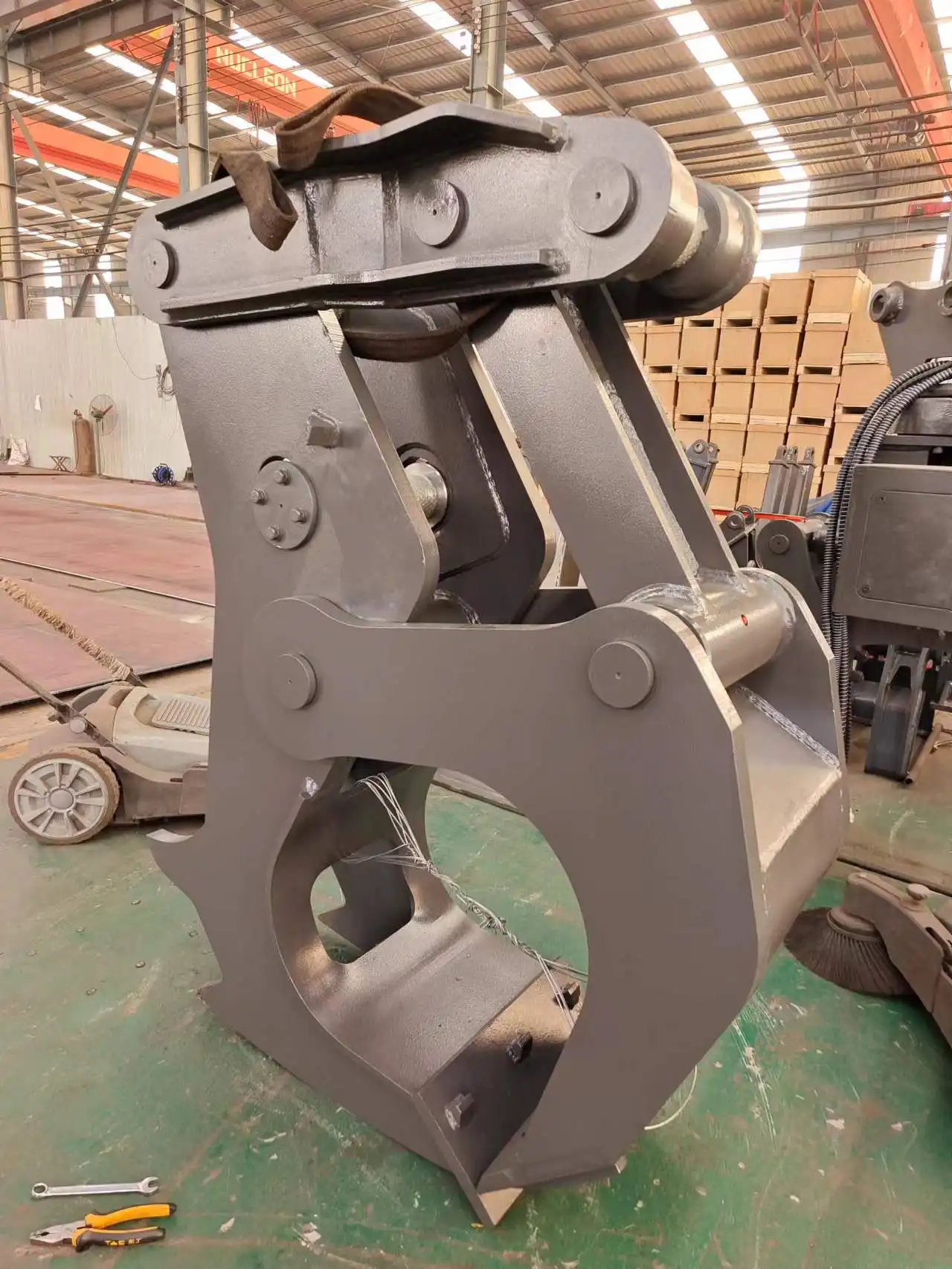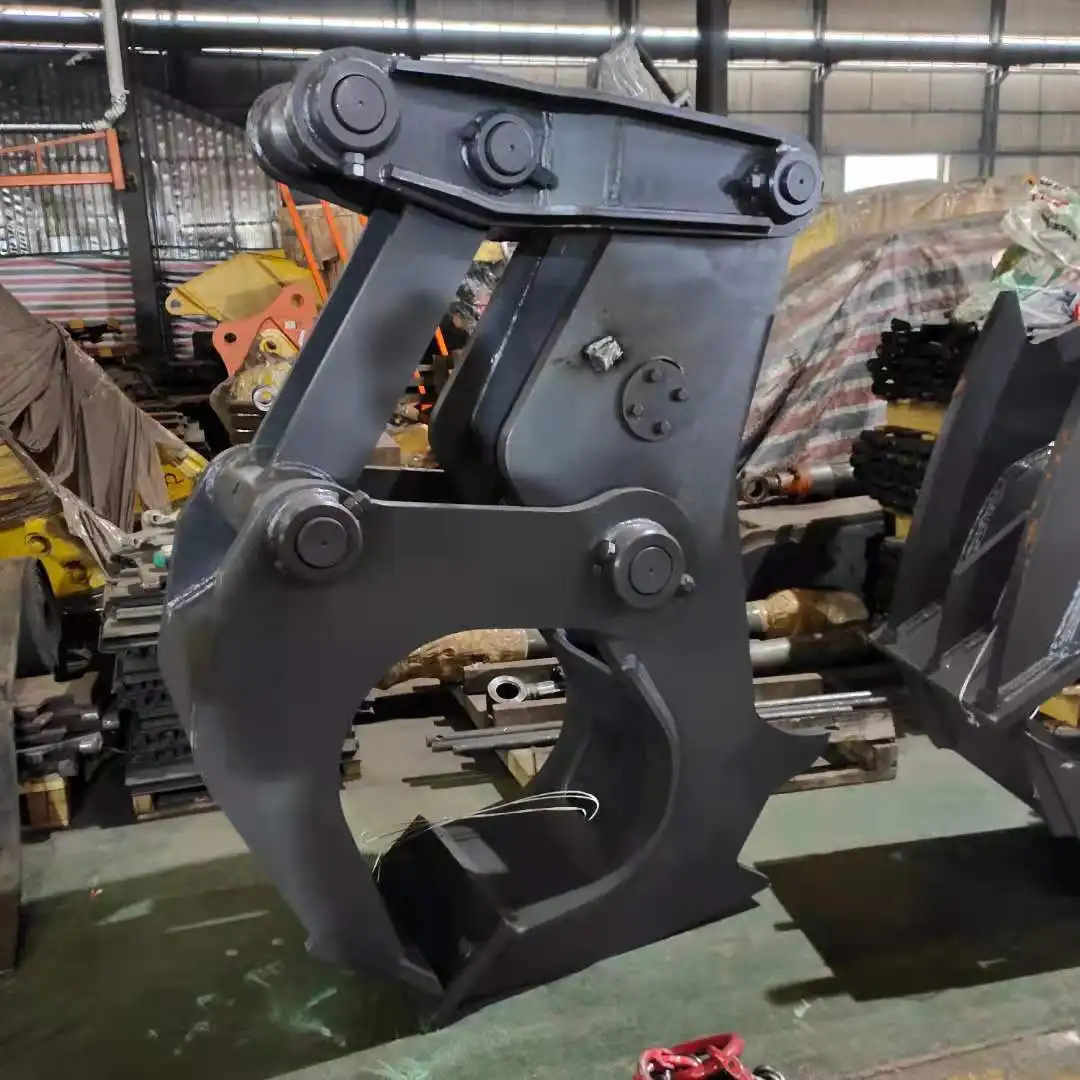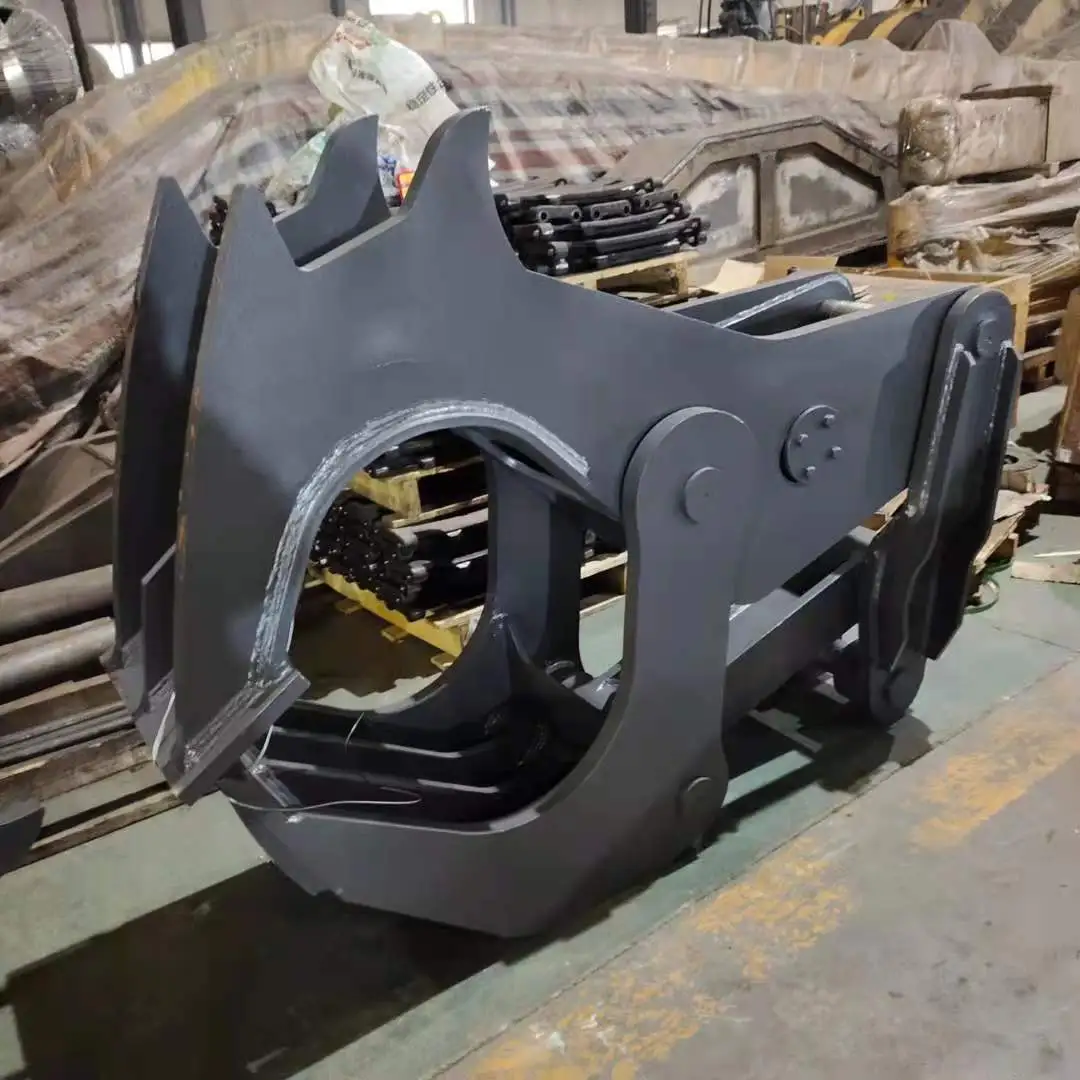How to effectively use an excavator wood splitter for large logs?
Mastering the art of using an excavator wood splitter for large logs can significantly boost your productivity in forestry and land-clearing operations. These powerful attachments transform your excavator into a highly efficient log-splitting machine, capable of handling even the most stubborn and oversized logs. By combining the excavator's reach and power with a specialized splitting attachment, you can tackle large-scale wood processing tasks with ease.
Choose the Right Type of Splitter
Beam vs. Cone Splitters: Which is Best for Your Needs?
When it comes to wood splitters, you'll typically encounter two main types: beam splitters and cone splitters. Each has its strengths, and your choice should depend on your specific requirements.
Beam splitters use a hydraulically-powered wedge that moves along a beam to split logs. They're excellent for producing uniform splits and can handle a wide range of log sizes. Beam splitters are ideal if you need precise control over the splitting process and want to produce firewood or lumber with consistent dimensions.
On the other hand, cone splitters utilize a rotating, cone-shaped wedge that drills into the log, forcing it to split apart. These are particularly effective for dealing with large, gnarly logs that might challenge traditional splitters. Cone splitters can be faster and require less repositioning of logs, making them a good choice for high-volume operations.
Matching Splitter Size to Your Excavator's Capacity
It's crucial to select a wood splitter that's compatible with your excavator's size and hydraulic capabilities. Using a splitter that's too large for your machine can strain the hydraulic system and potentially cause damage. Conversely, a splitter that's too small won't fully utilize your excavator's power, resulting in inefficient operation.
Consider your excavator's weight class and hydraulic flow rate when choosing a splitter. Most manufacturers provide specifications that indicate which excavator sizes their splitters are designed for. As a general rule, larger excavators can handle more powerful splitters, allowing you to process bigger logs more quickly.
Considering Log Size and Wood Type for Optimal Splitting
The type of wood you'll be splitting and the typical size of your logs should also influence your choice of splitter. Hardwoods like oak or maple require more splitting force than softwoods like pine. If you frequently work with hardwoods or particularly large logs, you may need a splitter with a higher tonnage rating.
Additionally, consider the maximum log diameter your splitter can handle. Some models are designed specifically for oversized logs, while others are better suited for more moderate sizes. Matching your splitter to your typical log sizes will ensure smooth and efficient operation.

Positioning and Operation Tips
Maximizing Efficiency with Proper Log Placement
Proper positioning of both your excavator and the logs is key to efficient splitting. Start by creating a stable work area, ensuring your excavator is on level ground. Arrange your logs in a way that minimizes the need for repositioning between splits. A good strategy is to create a semi-circle of logs around your excavator's working radius.
When splitting, aim to position the log so that the splitter can work through the grain of the wood. This typically means aligning the log perpendicular to the splitter's blade or cone. For beam splitters, try to center the log on the beam for the most effective split. With cone splitters, aim for the center of the log end, allowing the cone to drill in smoothly.
Techniques for Splitting Oversized and Gnarly Logs
Large or knotty logs can present a challenge, but with the right approach, your excavator wood splitter can handle them effectively. For exceptionally large logs, consider using a "quartering" technique. Start by splitting the log in half, then rotate each half and split again to create quarters. This approach reduces the strain on your equipment and makes the splitting process more manageable.
When dealing with gnarly logs full of knots, patience is key. Look for natural weak points or cracks in the wood to start your split. If using a cone splitter, you may need to apply pressure more gradually to allow the cone to work its way through tough sections. For beam splitters, try angling the wedge slightly to work around knots rather than trying to split directly through them.
Safety Measures When Operating Excavator Wood Splitters
Safety should always be your top priority when operating heavy machinery like excavator wood splitters. Ensure that all operators are properly trained and familiar with the equipment. Wear appropriate personal protective equipment, including hard hats, safety glasses, and steel-toed boots.
Establish a clear work zone around the excavator and splitter, keeping other workers at a safe distance. Be aware of your surroundings and potential hazards, such as falling wood pieces or shifting logs. Regular equipment inspections are crucial – check hydraulic lines, attachments, and connections before each use to prevent accidents caused by equipment failure.

Hydraulic and Attachment Considerations
Ensuring Adequate Hydraulic Flow for Powerful Splitting
The effectiveness of your excavator wood splitter largely depends on your machine's hydraulic system. Adequate hydraulic flow is essential for generating the power needed to split large logs efficiently. Most wood splitters require a specific range of hydraulic flow, typically measured in gallons per minute (GPM) or liters per minute (LPM).
Check your excavator's hydraulic specifications and compare them to the requirements of your wood splitter. If your machine's flow rate is at the lower end of the recommended range, you might experience slower splitting speeds. In such cases, consider adjusting your excavator's hydraulic settings if possible, or look into hydraulic flow amplifiers that can boost your system's output.
Proper Attachment and Maintenance of Splitter Equipment
Correct attachment of your wood splitter to the excavator is crucial for both performance and safety. Follow the manufacturer's guidelines carefully when installing the splitter. Ensure all connections are secure and that the splitter is properly aligned with your excavator's boom and arm.
Regular maintenance is key to keeping your wood splitter in top condition. This includes daily checks of hydraulic fittings and hoses for leaks or wear, greasing moving parts as recommended, and inspecting the splitting wedge or cone for damage. Keep the splitter clean, removing any wood debris that could interfere with its operation. Proper maintenance not only extends the life of your equipment but also ensures consistent performance and safety.
Upgrading Excavator Hydraulics for Enhanced Performance
If you find that your excavator's standard hydraulic system isn't providing the power you need for efficient log splitting, consider upgrading. There are several options available to enhance your hydraulic performance:
1. Install a high-flow hydraulic kit: These kits can increase your excavator's hydraulic flow rate, providing more power to your wood splitter.
2. Add an auxiliary hydraulic circuit: This can provide dedicated hydraulic flow to your attachment, ensuring optimal performance without affecting other excavator functions.
3. Upgrade hydraulic pumps: More powerful pumps can increase overall hydraulic output, benefiting not just your wood splitter but other attachments as well.
Before making any upgrades, consult with your excavator manufacturer or a qualified hydraulic specialist to ensure compatibility and avoid potential damage to your machine.

Effectively using an excavator wood splitter for large logs involves careful consideration of equipment selection, proper operational techniques, and ongoing maintenance. By choosing the right splitter for your needs, mastering efficient splitting methods, and ensuring your excavator's hydraulic system is up to the task, you can significantly boost your wood processing productivity. Remember, safety should always be your top priority. With these guidelines in mind, you'll be well-equipped to tackle even the most challenging log-splitting tasks with confidence and efficiency.
FAQ
1. How does an excavator wood splitter compare to traditional log splitters?
Excavator wood splitters are generally more powerful and efficient than traditional log splitters, especially for large-scale operations. They can handle larger logs and work faster, leveraging the excavator's hydraulic power and mobility.
2. Can I use an excavator wood splitter on any type of wood?
Yes, excavator wood splitters can handle most types of wood. However, hardwoods may require more power, and very knotty or irregularly shaped logs might need special techniques.
3. How often should I maintain my excavator wood splitter?
Daily visual inspections are recommended, along with greasing as per the manufacturer's guidelines. A more thorough check and maintenance should be performed weekly or after every 40 hours of use.
4. What safety precautions should I take when using an excavator wood splitter?
Always wear proper PPE, establish a clear work zone, ensure proper training for operators, and regularly inspect equipment. Never attempt to clear jams or adjust the splitter while it's in operation.
5. How can I increase the efficiency of my wood splitting operation?
Optimize your log placement, match your splitter to your excavator's capabilities, maintain your equipment properly, and consider upgrading your hydraulic system if necessary for improved performance.
Excavator Wood Splitter Factory
At Tiannuo Machinery, we specialize in manufacturing high-quality excavator attachments. Our product range extends beyond wood processing equipment, encompassing a wide array of solutions for railway maintenance, excavator modifications, and engineering applications. From railway sleeper changing machines to extended excavator arms and specialized buckets, we offer comprehensive solutions for various industries. Our wood splitters are designed to maximize productivity in forestry and land-clearing operations, featuring advanced hydraulic systems and durable construction. For those seeking to enhance their excavator's capabilities or require specialized attachments, we invite you to explore our diverse product line. Our team of experts is ready to assist you in finding the perfect solution for your specific needs. To learn more about our excavator wood splitters and other innovative products, contact us at rich@stnd-machinery.com.
References
- Johnson, R. (2023). "Advanced Techniques in Hydraulic Wood Splitting". Forestry Equipment Quarterly, 45(2), 78-92.
- Smith, A. & Brown, T. (2022). "Excavator Attachments: Maximizing Versatility in Construction and Forestry". Heavy Equipment Review, 18(4), 112-125.
- Green, L. (2023). "Safety Protocols for Heavy Machinery in Logging Operations". Journal of Industrial Safety, 31(3), 201-215.
- Thompson, E. (2022). "Hydraulic System Optimization for Excavator Attachments". Engineering Solutions Today, 27(1), 55-68.
- Davis, M. (2023). "Environmental Impact Assessment of Mechanized Logging Practices". Sustainable Forestry Journal, 14(2), 180-195.
- Wilson, K. (2022). "Cost-Benefit Analysis of Excavator-Based Wood Processing". Forest Products Economics, 39(4), 301-315.
About Author: Arm
Arm is a leading expert in the field of specialized construction and railway maintenance equipment, working at Tiannuo Company.

